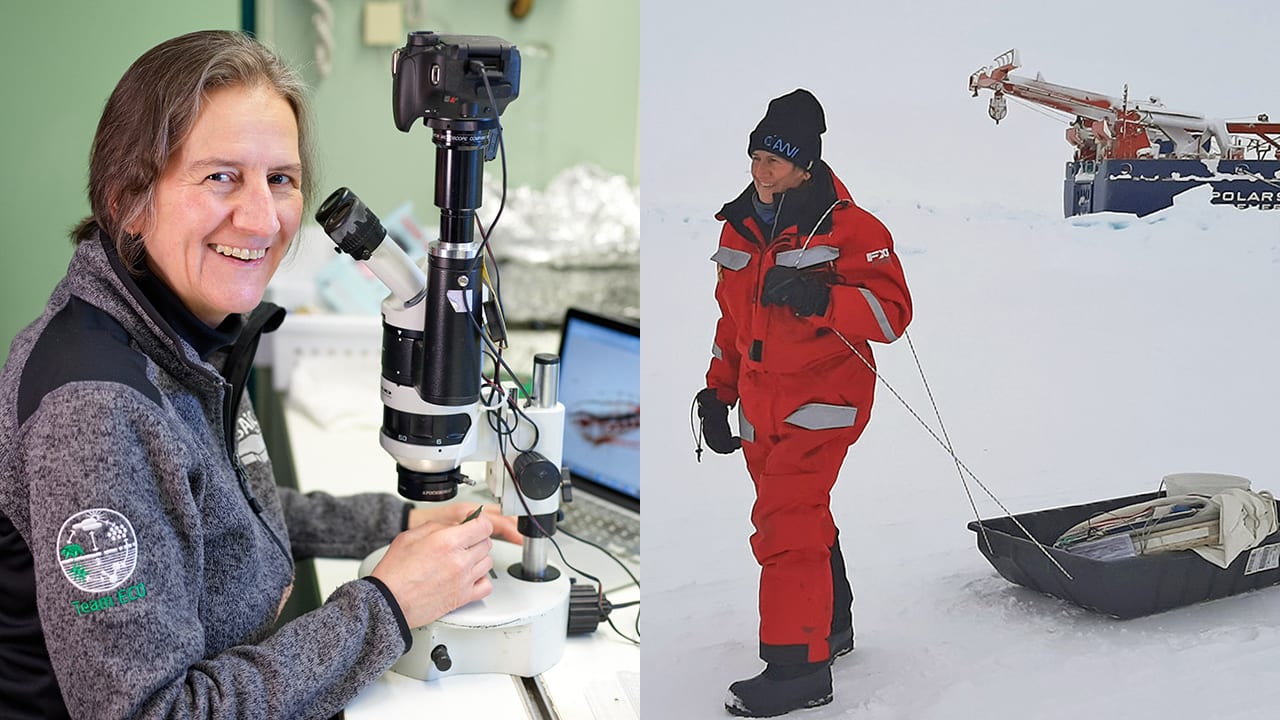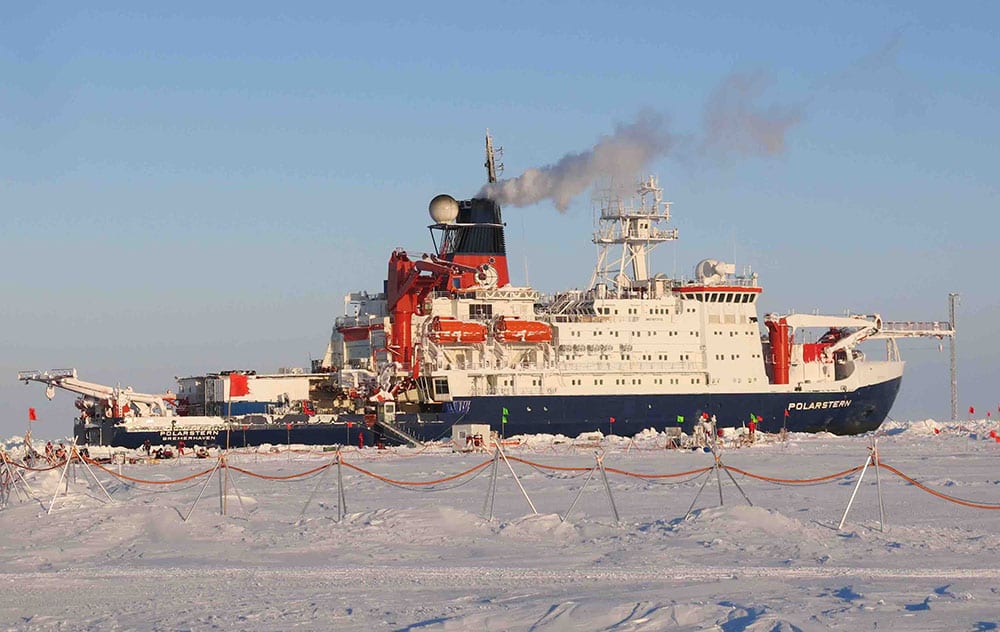Imagining Home: scientist’s stay in the Arctic extended by coronavirus
By Ken Kostel | April 22, 2020
Members of Leg 3 of the Multi-disciplinary Drifting Observatory for the Study of Arctic Climate (MOSAiC) line the rails of the Russian icebreaker Kapitan Dranitsyn prior to the ship’s departure from Tromsø, Norway, in February. (Photo by Carin Ashjian, ©Woods Hole Oceanographic Institution)
WHOI biologist Carin Ashjian should be almost home by now. Instead, she is staying right where she is—or rather, wherever the Arctic sea ice pushes her, which is likely to be far from shore and even farther from home.
Ashjian is currently on board the German icebreaker Polarstern, which steamed north from Norway in September last year, nestled itself into an ice floe near the top of the world, and stayed there as the ocean froze around it and the sky grew darker with the drawing winter. The plan, as part of the Multidisciplinary Drifting Observatory for the Study of Arctic Climate, or MOSAiC program, is for the ship to remain frozen in for a full year to study all aspects of the Arctic system—from ocean to ice to atmosphere.

The MOSAiC expedition year is divided into six scientific “legs” lasting roughly two months each. Ashjian left Woods Hole, Mass. in January for her journey to reach the ship by mid-February as part of Leg 3. At the time, the novel coronavirus didn’t even have a name yet and infections were still largely confined to China. Over the course of her stay, however, the world changed, and so did plans for a replacement science party.
The MOSAiC organizers at the Alfred Wegener Institute in Germany recently announced that the members of Leg 3 would stay on board the ship until they could ensure that the next group was virus-free, possibly requiring an extension of Leg 3 for another two months. In the meantime, Ashjian continues to do the only thing she can do, and the reason she made the trip in the first place—study the zooplankton that make up a critical part of the Arctic food web. And in one of the fastest-warming places on the globe, having a baseline understanding of the Arctic ecosystem will help improve predictions (and better prepare) for changes in weather, climate, and fisheries that we rely on in more southern latitudes.
Ashjian’s rare messages back to shore (up until her stay was extended, she was limited to just 50 Kb per email over a computer and satellite connection shared with everyone else on the ship) had been focused almost entirely on the trip from Norway to the Polarstern via the Russian icebreaker Kapitan Dranitsyn and the special opportunity that participating in MOSAiC is giving her and her colleagues on Leg 3. It was only at the very end of her last message that a little of our current reality crept into her words:
“As I sit in my lab, photographing copepods and putting them in tin boats for later analysis of carbon and nitrogen content,” she wrote, “or stand in the container playing music on my iPhone and filtering water for chlorophyll content, I reflect on how what I thought would be surreal (working on a ship frozen into the ice in the middle of the Arctic Ocean) is now normal and the world that I left behind is the one that is surreal. I cannot imagine what it is like at home. Here we continue as normal on a ship. Social distancing is not a term in use. We can think of home but cannot imagine what it is really like.”

WHOI research associate Phil Alatalo faces a different uncertainty: Will he be able to depart from Norway in July as planned in order to participate in the final leg of MOSAiC? The current plan is to have all members of that leg spend one week in isolation and then a second week quarantined in sub-units—an additional layer of caution—before boarding the icebreaker that will take them north to the Polarstern. All of this has the veteran of more than a dozen Arctic expeditions wondering how much the pandemic has changed research at the ends of the Earth. “Nothing is certain at this point,” said Alatalo. “We don’t know what the future will look like.”
Ashjian’s and Alatalo’s participation in MOSAiC is funded by the National Science Foundation.
